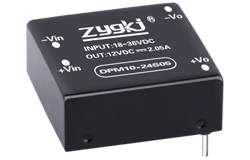news
Unleashing the Power of Language: Exploring the Advantages of a Bidirectional Converter
Author: ZYG Power Module Time: 2023-7-2
Language is a powerful tool that connects people across cultures and enables them to express their thoughts, emotions, and ideas. However, the language barrier often poses a significant challenge in communication. In today’s globalized world, there is a growing need for effective language translation and interpretation solutions to bridge this gap. One such solution that has gained significant attention is the bidirectional converter.
A bidirectional converter is a cutting-edge technology that allows for seamless translation between two languages. Unlike traditional translators that convert text from one language to another, a bidirectional converter offers the unique ability to translate text back and forth between two languages. This bidirectional capability opens up a world of possibilities by empowering individuals to communicate more effectively and understand the nuances of each language.
One of the key advantages of a bidirectional converter is its ability to preserve the original meaning and context of the text. Unlike other translation methods, which often result in loss of meaning or misinterpretation, a bidirectional converter ensures that the intended message is accurately conveyed in the target language. This is especially crucial when dealing with complex or technical content, where precision and accuracy are paramount.
Another advantage of a bidirectional converter is its efficiency and time-saving capabilities. With traditional translators, one would typically need to convert text from one language to another and then back again to understand the response. This back-and-forth process is not only time-consuming but also prone to errors. However, a bidirectional converter eliminates the need for multiple translations, allowing for real-time communication and faster decision-making.
Furthermore, a bidirectional converter promotes inclusivity and cultural understanding. By enabling individuals to communicate in their native language, it fosters a sense of belonging and ensures that no one is left out of the conversation. This is particularly significant in multicultural workplaces or international conferences, where participants may have varying levels of proficiency in a shared language. A bidirectional converter allows for equal participation and promotes a more inclusive environment.
In addition to its advantages in spoken communication, a bidirectional converter also has immense potential in written translation. It can revolutionize the way documents, websites, and literature are translated, making them more accessible to a global audience. By preserving the original meaning and context, a bidirectional converter ensures that translated texts are not only accurate but also culturally sensitive and engaging for readers.

Despite its numerous advantages, it is important to acknowledge that a bidirectional converter is not without its limitations. Language is complex, and nuances, idioms, and cultural references may still pose challenges for translation. Additionally, the accuracy and effectiveness of a bidirectional converter heavily rely on the quality of the underlying algorithms and linguistic databases.
In conclusion, a bidirectional converter holds great promise in overcoming the language barrier and facilitating effective communication in today’s interconnected world. Its ability to accurately translate text back and forth between two languages, preserve original meaning, and promote inclusivity makes it a valuable tool for individuals, organizations, and society as a whole. As technology continues to advance, it is crucial to invest in further research and development of bidirectional converters to unlock their full potential and unleash the power of language.
Precedente: AC-DC Power Supply: Bridging the Gap Between Alternating and Direct Current
Prossimo: AC DC Power Supply PFC Series
informazioni rilevanti
-
2023-6-25
Medical Power Series: Empowering Healthcare Professionals and Patients for Better Health
The healthcare industry has seen significant advancements in recent years, thanks to the use of technology. With the introduction of wearables, telemedicine, and electronic health records, healthcare professionals can now provide better care to patients. However, with these advancements come challenges, such as data privacy and security concerns, lack of standardization, and limited access to healthcare in some areas. To overcome these challenges and ensure that healthcare professionals and patients have access to the tools they need, medical power series have been developed. Medical power series, also known as medical grade computers, are designed specifically for the healthcare industry. These devices are built with features that are necessary for healthcare professionals to provide quality care to their patients. They are...
Visualizza dettagli -
2023-5-24
Efficient AC-DC Converter for Industrial Applications
In this modern era, the use of electronic devices has become a common practice in various fields, including industrial applications. To operate these devices, there is a need for a reliable and efficient power supply. An AC-DC converter is an essential component that transforms the alternating current (AC) power into direct current (DC) power, which is suitable for most electronic devices. However, the efficiency of such converters is critical, as it directly affects the performance and reliability of the electronic devices. Therefore, designing an efficient AC-DC converter for industrial applications is essential. The efficiency of an AC-DC converter is determined by its power dissipation during the conversion process. The power dissipation can be reduced by minimizing the conversion losses, which...
Visualizza dettagli -
2023-4-20
How to Build a 120 Volt AC Power Supply for 3 Volt DC Output
If you looking to power a small device that requires 3 volts of DC power, you may be wondering how to build a suitable power supply. One option is to build your own 120 volt AC power supply and use a voltage regulator to step down the voltage to 3 volts. Here how to do it: Materials: - Step-down transformer (120V AC to 12V AC) - Bridge rectifier - Capacitor - Voltage regulator (LM317) - Heat sink - Resistors - Potentiometer - LED - 3 volt DC load - Soldering iron and solder - Multimeter Step 1: Choose a transformer The first step is to choose a step-down transformer that converts the 120V AC input to 12V AC output. Make...
Visualizza dettagli -
2022-10-17
Come acquistare un convertitore DC-DC e cosa fa
Quando cerchi un convertitore CC-CC, è importante considerare le tue esigenze e scegliere il convertitore giusto per il lavoro. Ci sono un'ampia varietà di convertitori sul mercato, quindi è importante fare la tua ricerca e trovare quello che meglio soddisfa le tue esigenze. Che cos'è un convertitore CC-CC? Un convertitore CC-CC (convertitore da corrente continua a corrente continua) è un convertitore elettronico che converte un ingresso di corrente continua (CC) in un'uscita di corrente continua. I convertitori CC-CC vengono spesso utilizzati per convertire la tensione dalla batteria a un livello adatto per alimentare dispositivi elettronici. I convertitori CC-CC vengono utilizzati anche negli alimentatori per convertire una tensione di ingresso CA in una tensione di uscita CC. Quali sono le...
Visualizza dettagli -
2023-5-6
Designing an AC-DC Converter Circuit
An AC-DC converter circuit is an essential component in many electronic devices. It is a device that converts alternating current (AC) to direct current (DC). This circuit is commonly used in power supplies for electronic devices, such as laptops, smartphones, and other household appliances. In this article, we will discuss the basic components of an AC-DC converter circuit and the steps involved in designing one. Basic Components The basic components of an AC-DC converter circuit include a transformer, rectifier, filter, and regulator. The transformer is used to step down the AC voltage to a lower value. The rectifier converts the AC voltage to DC voltage. The filter removes the unwanted AC components from the DC output, and the regulator is...
Visualizza dettagli -
2023-4-17
AC-DC Converter: Transforming Alternating Current to Direct Current
An AC-DC converter is an electronic device that transforms alternating current (AC) into direct current (DC). This process is necessary because most electronic devices, such as computers, phones, and televisions, require DC voltage to operate. AC voltage, on the other hand, is the type of current that is generated by power plants and is supplied to households through power lines. The AC-DC converter works by first converting the AC voltage into a pulsating DC voltage using a rectifier circuit. This circuit uses diodes to allow current to flow in only one direction, effectively eliminating the negative half of the AC waveform. The resulting waveform is a series of positive voltage pulses that are separated by brief periods of no voltage....
Visualizza dettagli


















